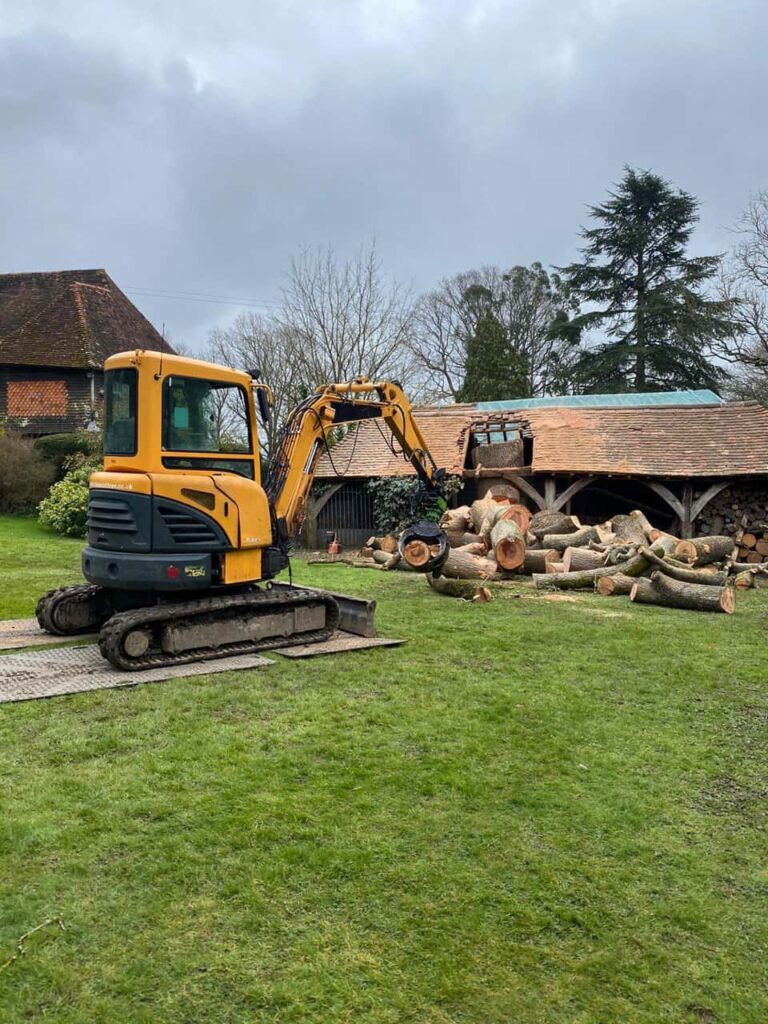Introduction: Trimming hedges is a common task for homeowners looking to maintain the beauty and privacy of their property. While hedge cutting may seem like a straightforward chore, it’s essential to prioritise safety to prevent accidents and injuries. From using the right tools to practising proper techniques, homeowners should take several precautions to ensure a safe and successful hedge-trimming experience. This guide will share essential safety precautions every homeowner should know before tackling their hedge-cutting project.
Wear Protective Gear:
- Before starting any hedge-cutting work, wearing appropriate protective gear to safeguard against potential hazards is crucial. This includes gloves to protect hands from cuts and scratches, safety goggles to shield eyes from flying debris, and sturdy footwear with nonslip soles for stability on uneven ground. Additionally, consider wearing long sleeves and pants to protect your arms and legs from thorns and branches.
Inspect Tools and Equipment:
- Before using hedge-cutting tools such as trimmers or shears, thoroughly inspect them for any signs of damage or wear. Ensure that blades are sharp and properly lubricated, handles are secure, and safety guards are in place. Faulty or damaged equipment can increase the risk of accidents and injuries, so it’s essential to maintain tools in good working condition or replace them if necessary.
Choose the Right Tool for the Job:
- Selecting the appropriate hedge-cutting tool is essential for safety and efficiency. Handheld hedge shears or pruners may be sufficient for small hedges or precise trimming. However, for larger hedges or extensive trimming work, consider using powered hedge trimmers for faster and more precise results. Choose a tool that matches the size and density of your hedges and allows you to work comfortably without straining or overreaching.
Plan Your Work:
- Before starting hedge-cutting work, plan your approach and identify any potential hazards or obstacles in the area. Clear away debris, rocks, or other objects that could trip you or damage equipment. Ensure that ladders or step stools are stable and positioned securely on level ground before climbing to reach high branches. It’s also essential to check for overhead power lines or cables and maintain a safe distance to avoid accidental contact.
Practise Proper Technique:
- When trimming hedges, use proper cutting techniques to minimise strain on muscles and joints and reduce the risk of injury. Hold trimming tools securely with both hands and use smooth, controlled motions to cut branches evenly. Avoid overreaching or stretching beyond your comfort zone, as this can lead to muscle strain or loss of balance. Take regular breaks to rest and hydrate, especially when working in hot or humid conditions.
Stay Alert and Mindful:
- You must stay alert and mindful of your surroundings throughout the hedge-cutting process to prevent accidents. Be aware of hazards like uneven terrain, slippery surfaces, or nearby wildlife. Avoid loud music or phone calls that can interfere with focus and concentration. If working with a partner or helper, communicate clearly and coordinate your actions to avoid accidents or collisions.
Conclusion: Trimming hedges can be a rewarding task that enhances the appearance and functionality of your property. However, it’s crucial to prioritise safety to prevent accidents and injuries. By following these safety precautions, homeowners can enjoy a safe and successful hedge-cutting experience while maintaining the beauty and health of their hedges. Remember to wear protective gear, inspect tools and equipment, choose the right tool for the job, plan your work, practise proper technique, and stay alert and mindful throughout the process. With safety as a top priority, hedge cutting can be a satisfying and fulfilling task for homeowners to tackle confidently.
Call us on: 01394 338 692
Click here to find out more about Felixstowe Tree Surgeons
Click here to complete our contact form and see how we can help with your tree’s needs.

